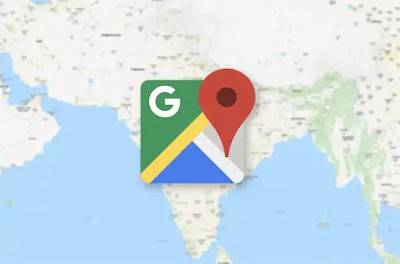What exactly is Google Maps?
Google Maps, which has over a billion monthly active users,
was created in 2005 as a desktop solution to help people go from " point A
to point B ". It's been a long journey, and after more than 15 years, Maps
has evolved into an indispensable service that we all use on a daily basis.
C++, JavaScript, XML, and Ajax are the languages utilised to
create the Google Maps framework. We all have this app pre-installed on our
Android phones, thanks to the original desktop solution. Now that we've covered
the Maps, let's move on to the technical aspects of the programme.
What algorithm are they employing?
To compute the shortest distance from point A (Source) to
point B, Google Maps employs two graph algorithms: Dijkstra's algorithm and A*
algorithm (destination). A graph data structure is essentially a collection of
nodes with edges and vertices defining them.
The Algorithm of Dijkstra’s
If you've been programming for a long, you've most likely
heard of Dijkstra's algorithm. One of the greedy methods used to optimise and
identify the shortest path between nodes in a graph is Dijkstra's algorithm.
Dijkstra's algorithm is a useful algorithm proposed in 1956 by Edsger.W.
Dijkstra and published three years later.
There are numerous variations of this algorithm. The original
technique looked for the shortest distance between two nodes, whereas the
version starts with a single node as the source and then searches for the
shortest path to other nodes. And it's this principle that Google Maps uses to
calculate and display the shortest path between two points. This algorithm,
however, has one flaw. Because the number of nodes in Google Maps is nearly
limitless or uncountable, this technique may fail as time and space complexity
increases. That's where the A* algorithm comes in handy.
Algorithm A*
The A* graph algorithm is a graph traversal and path search
technique designed specifically for weighted graphs. Because of its
completeness, optimality, and efficiency, this approach is chosen. The A*
method, like Dijkstra's, employs a heuristic function to find a better and more
efficient path. Unlike Dijkstra's method, the A* algorithm concentrates solely
on the target nodes and ignores all other nodes, making it more efficient. It
also considers factors like as time, distance, and other factors when
optimising and selecting the best nodes.
That was enlightening, wasn't it?
So that the next time you use Google Maps to get somewhere,
you'll recall the app's algorithm and how this way was chosen as the most
efficient for you.
Also Read:
The algorithm predicts inverted new material compositionssoftware developers, you're on the wrong track to machine learning
'White' Artificial Intelligence Risk Increases Racial Inequality, Study Reveals
How to disable Google Meet in Gmail






![Oppenheimer 2023 Download in Hindi Filmywap [480p 720p 1080p] | Cillian Murphy Oppenheimer Download in Hindi](https://blogger.googleusercontent.com/img/b/R29vZ2xl/AVvXsEivuQ9GvdRiRJ2wFfSwrU_6UJjp3hHD47CM4O0BvRggdyzLgtND1gA4arnK2J-IFq0sIUIH-5kRhgkGpScmafe9QhglnZd_v2kJwbd7u8JNTwsbnzvUvGh7KSnhvWaduRU5YoXHO-epSL-MNcIvHNiIza8sfKhzu0JhXMi-lqgMFk7hAUK2tD8EqyYWn5if/w680/Oppenheimer.jpeg)




2 Comments
Knowledgeable information.
ReplyDeletemore post will be coming soon
DeleteIf you have any doubt, Please let me know.